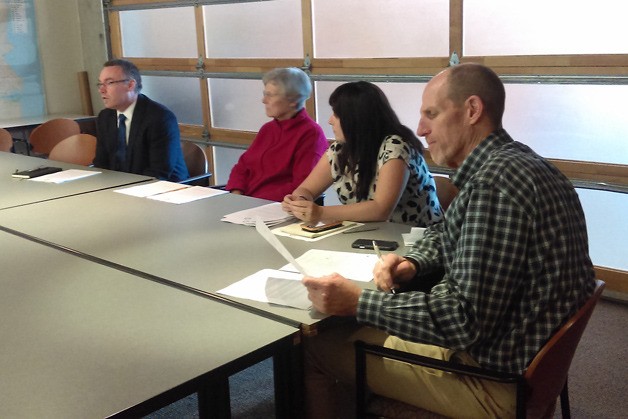The city of Bainbridge Island said Tuesday contaminated soils have been found on the potential site for a new police station and court facility.
Bainbridge hopes to build a new public safety facility on land just north of city hall.
The city has put a $15 million bond proposal on the Nov. 3 ballot to raise funding for the project.
City officials knew that the site was contaminated because it has been listed as a hazardous site by the state Department of Ecology.
The contamination of the site was “much more extensive,” said City Manager Doug Schulze, than what was found in previous assessments in 2000 and 2009.
The property, located at 290 Madison Avenue North, is a former location of a dry cleaning business.
The city will move forward with the acquisition of the property, Schulze said.
Mayor Anne Blair said the city council was notified of the problems a week ago during a closed-door executive session before the council’s last meeting.
Council members reviewed a draft report on the pollution that was completed by Environmental Associates, Inc., a Bellevue-based consultant.
The consultant’s final report was sent Oct. 9 to the city.
Contaminants found on the property include PCE (Tetracholoroethene) and TCE (Trichloroethene), which city officials noted are common by-products of dry cleaning.
According to the Environmental Associates, Inc. report on the property, the areas that could be tested in the most recent study were limited by the current property owner.
The consultant conducted a limited geophysical survey of exterior areas of the property, with a focus on locating utilities and storm-drain systems. The latest environmental assessment also included four deep borings into the earth about 20 feet in depth, and three shallower borings about 10 feet deep.
Thirteen soil samples were collected and analyzed, but groundwater was not studied.
The study said soil as deep as 15 to 20 feet below the surface was found to be contaminated with PCE at a concentration above the compliance level set by the state Department of Ecology.
Contaminated soil was found near the location of a former dumpster area on the property, but the consultants said the pollution “may extend much further south.”
While groundwater has not been assessed, moist soil was found about 9 to 12 feet below the surface, and the consultant report said it was “highly probable” that groundwater may be impacted.
“The depth to and environmentally quality of potentially deeper regional groundwater resources are also unknown/unassessed,” the report states.
The report said that the dry-cleaning solvents of PCE and TCE were also found in a vapor sample that was taken, and the concentration found exceeded Ecology’s vapor intrusion risk screening levels.
The report said the building on the property, and nearby structures within 100 feet of the contaminated soil, could also be at risk for vapor intrusion.
“This could conceivably include structures on adjacent properties, particularly to the north, south and east,” the report noted.
The analysis also cautioned that although vapor intrusion risk screening levels had been exceeded, that did automatically mean that indoor air quality had been adversely affected in structures on or near the property.
The consultant recommended additional testing on the site, including the installation of permanent monitoring wells.
Deeper borings were also needed, as well as an expanded study on vapor risks and indoor air quality on the property and nearby parcels that may also be at-risk.



